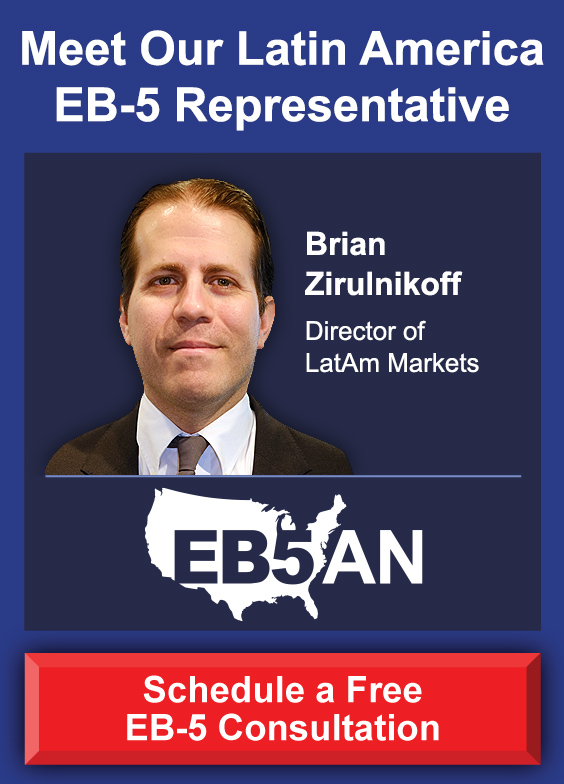The EB-5 investment industry underwent a number of significant changes in 2021. In June, the controversial Modernization Rule was overturned, returning several EB-5 regulations to their pre-2019 status. Amongst these changes was a reduction in the minimum investment thresholds for participation in the EB-5 investment program. Foreign nationals can once again join the program for a minimum investment of $500,000 if they select a project in a targeted employment area (TEA).
While this was welcome news, it was followed a few days later by an unexpected event. The popular regional center program expired on June 30, and as of February 2022, has yet to be reauthorized. Many prospective investors who were previously interested in making EB-5 investments through regional centers are turning to direct EB-5 projects. This is the only valid EB5 investment model at present, and it has the benefit of not requiring periodic reauthorization from Congress.
Experts in the EB-5 industry have been speculating about how and when the regional center program may be reauthorized. Several suggested that reform for the EB-5 program would be included in an appropriations bill in December 2021, but this legislation has now been postponed to March 2022.
On February 3, 2022, a leaked version of an EB-5 bill gave insight into the changes that may be implemented. According to the draft, the regional center program would be revalidated through 2027. New regulations related to transparency and integrity would be introduced, and the bill would update guidelines for how TEAs are designated.
While these changes are positive for members of the EB-5 industry, the draft bill also indicated a significant increase in the minimum investment threshold to $700,000. This change will limit the number of foreign nationals able to participate in the program.
Time is of the essence for prospective investors looking to join the EB-5 program at the lower rate of $500,000; Congress may pass the appropriations bill within the coming weeks and thereby implement the higher investment threshold. In this article, we outline the steps that must be taken for a foreign national to get started in the EB-5 process.
Documenting EB-5 Investment Capital
When preparing the funds for an EB-5 investment, foreign nationals will need to provide evidence of where the funds came from and demonstrate that they were lawfully sourced. EB-5 regulations permit funds from almost any source, but there are strict evidentiary standards that must be fulfilled. When filing Form I-526 with United States Citizenship and Immigration Services (USCIS), investors will need to provide documentation proving that all of the funds were acquired legally.
The evidence required depends on where the funds come from. For example, if the funds are sourced from salary payments, an investor should provide their work contract, proof of receipt of the salary, and evidence that the appropriate income tax has been paid. On the other hand, the documentation for funds acquired from loans or resulting from real estate sales or inheritances is different.
As this is often the most complex and time-consuming step in the EB-5 process, investors are strongly recommended to consult an EB-5 immigration attorney. Through their experience, the attorney will advise on which funds are the most straightforward to document and ascertain what evidence is missing from the investor’s visa petition.
Selecting a Reliable EB-5 Project
When choosing an EB-5 project to subscribe to, foreign nationals must do due diligence to ensure the project is reliable. If the project does not comply with USCIS guidelines, then the investor’s visa petition will be denied. Projects that fulfill the EB-5 criteria are more likely to result in an approved visa petition and permanent residency for their investors.
To make an investment at $500,000, an investor must select a project that is located in a TEA. For projects that do not have valid TEA designation, the investment must be at least $1,000,000 to qualify for the EB-5 program.
Investors should also ensure the EB-5 project they select fulfills the requirement of creating at least 10 full-time jobs for U.S. workers. For direct EB-5 projects, these positions must be employed by the EB-5 project and last for a minimum of two years. The best EB5 investment projects offer a job cushion by generating more employment than the minimum threshold.
It is also important for prospective investors to assess an EB-5 project’s finances. USCIS requires EB5 investment capital to remain at risk throughout the investment period, meaning that investors must be able to incur losses or gains.
In addition, foreign nationals should look for an EB-5 project with a strong financial plan that does not rely heavily on EB-5 capital. It is also important to check that key individuals within the project, such as the developers and the individuals handling the funds, have a solid track record in the EB-5 industry.
No Time for Delays
While the leaked draft is not a complete guarantee that Congress will include EB-5 reform in the upcoming appropriations bill, it does give solid reasons to expect changes to EB-5 policies in the coming weeks. Foreign nationals hoping to join the EB-5 investment program should start the process as soon as possible before further changes take place.








